Do you have a question about the Panasonic TX-32PS11P and is the answer not in the manual?
Covers electrical safety, environmental factors, and safe usage practices for the TV.
Instructions for cleaning and handling the TV's exterior and screen to prevent damage.
Advises on equipment disposal and specific usage advice for games/computers.
Describes the automatic standby function that activates after 30 minutes of inactivity.
Lists the operating instruction book, remote control, and batteries provided with the TV.
Guidance on correctly inserting batteries into the remote control.
Connecting aerial and ancillary equipment, and powering on the TV.
Selecting country and language for initial TV setup and auto-tuning.
Description of buttons located on the television's front panel.
Explanation of all buttons on the remote control and their uses.
Overview of the primary menu categories: Viewing, Picture, Sound, Setup.
Accessing and understanding Picture, Sound, Setup, and Tuning menus.
Accessing picture aspect ratio adjustments.
How to navigate through menus using remote control buttons.
Adjusting Contrast, Brightness, Colour, and Sharpness levels.
Adjusting Volume, Bass, Treble, and Balance.
Accessing timer, Q-Link, and other setup options.
Automatic detection and adjustment of picture aspect ratio based on signal.
How to view widescreen content correctly without distortion.
How to view 14:9 content without distortion.
Expanding 4:3 content or viewing standard 4:3 pictures.
Using Zoom1, Zoom2, and Zoom3 for aspect adjustments.
How to use the HOLD button to freeze the current image.
Choosing between Dynamic, Normal, and Cinema screen settings.
Navigating to the Picture adjustments menu.
Navigating to the Sound adjustments menu.
Navigating to the Setup options menu.
Storing settings for Dynamic, Normal, and Cinema viewing modes.
Fine-tuning Contrast, Brightness, Colour, and Sharpness levels.
Adjusting colour tone and picture interference (P-NR).
Adjusting overall volume levels and Bass/Treble frequencies.
Adjusting speaker balance and audio mode (Stereo/Mono).
Enhancing sound with music/speech modes and spatial effects.
Setting signals for AV1/AV2 and configuring the auto-off timer.
Managing data communication, teletext language, and tuning access.
Selecting display language and adjusting picture tilt/patches.
Editing channels and performing automatic station scans.
Tuning specific channels manually and setting transmission standards.
Adjusting station volumes and configuring external decoders.
Storing, deleting, and moving channels within the programme list.
Options for adding, moving, and deleting programmes from the list.
Inserting new programmes and rearranging existing ones.
Directly entering channel numbers via the menu.
Editing programme names and preventing access to channels.
Selecting the correct broadcast system (PAL/SECAM).
Transferring channel information to a compatible VCR/DVD via Q-Link.
The process of automatically finding and storing channels.
Selecting the correct region for optimal tuning.
Sending tuning data to connected VCR/DVD via Q-Link.
Step-by-step guide for menu-based channel tuning.
Using physical buttons for manual channel tuning.
Detailed steps for using front panel tuning controls.
Navigating tuning modes and saving changes via front panel.
Choosing the language for menu displays and on-screen information.
SCART lead requirements and device compatibility for Q-Link.
Using the DIRECT TV REC button for recording programmes.
Interpreting messages related to recording status and errors.
Ensuring VCR and TV have matching tuning information for reliable recordings.
VCR auto power control and disabling Q-Link.
Compatibility checks and SCART lead verification.
Operating standby, play, stop, and record functions.
Using fast forward, rewind, pause, and skip functions.
Navigating VCR programme positions using up/down controls.
Understanding Teletext availability, LIST, and FASTEXT modes.
Selecting pages using buttons or direct number entry.
Using MENU for reveal, update, and sub-coded pages.
Holding pages, storing favourites, and using the index.
Accessing specific teletext sub-pages for detailed information.
Switching between TV and AV sources using the TV/AV button.
Description of front panel audio and video inputs.
Description of rear panel audio and video inputs and outputs.
Technical details for AV1 and AV2 SCART terminals.
Technical details for the S-Video connection.
Diagnosing and resolving common picture issues like snowy or distorted images.
Diagnosing and resolving common sound issues like noisy or no sound.
Guidance on contacting Panasonic for service and repairs.
Details on power, dimensions, weight, and receiving systems.
Specifics on AV inputs, outputs, and programme positions.
Covers electrical safety, environmental factors, and safe usage practices for the TV.
Instructions for cleaning and handling the TV's exterior and screen to prevent damage.
Advises on equipment disposal and specific usage advice for games/computers.
Describes the automatic standby function that activates after 30 minutes of inactivity.
Lists the operating instruction book, remote control, and batteries provided with the TV.
Guidance on correctly inserting batteries into the remote control.
Connecting aerial and ancillary equipment, and powering on the TV.
Selecting country and language for initial TV setup and auto-tuning.
Description of buttons located on the television's front panel.
Explanation of all buttons on the remote control and their uses.
Overview of the primary menu categories: Viewing, Picture, Sound, Setup.
Accessing and understanding Picture, Sound, Setup, and Tuning menus.
Accessing picture aspect ratio adjustments.
How to navigate through menus using remote control buttons.
Adjusting Contrast, Brightness, Colour, and Sharpness levels.
Adjusting Volume, Bass, Treble, and Balance.
Accessing timer, Q-Link, and other setup options.
Automatic detection and adjustment of picture aspect ratio based on signal.
How to view widescreen content correctly without distortion.
How to view 14:9 content without distortion.
Expanding 4:3 content or viewing standard 4:3 pictures.
Using Zoom1, Zoom2, and Zoom3 for aspect adjustments.
How to use the HOLD button to freeze the current image.
Choosing between Dynamic, Normal, and Cinema screen settings.
Navigating to the Picture adjustments menu.
Navigating to the Sound adjustments menu.
Navigating to the Setup options menu.
Storing settings for Dynamic, Normal, and Cinema viewing modes.
Fine-tuning Contrast, Brightness, Colour, and Sharpness levels.
Adjusting colour tone and picture interference (P-NR).
Adjusting overall volume levels and Bass/Treble frequencies.
Adjusting speaker balance and audio mode (Stereo/Mono).
Enhancing sound with music/speech modes and spatial effects.
Setting signals for AV1/AV2 and configuring the auto-off timer.
Managing data communication, teletext language, and tuning access.
Selecting display language and adjusting picture tilt/patches.
Editing channels and performing automatic station scans.
Tuning specific channels manually and setting transmission standards.
Adjusting station volumes and configuring external decoders.
Storing, deleting, and moving channels within the programme list.
Options for adding, moving, and deleting programmes from the list.
Inserting new programmes and rearranging existing ones.
Directly entering channel numbers via the menu.
Editing programme names and preventing access to channels.
Selecting the correct broadcast system (PAL/SECAM).
Transferring channel information to a compatible VCR/DVD via Q-Link.
The process of automatically finding and storing channels.
Selecting the correct region for optimal tuning.
Sending tuning data to connected VCR/DVD via Q-Link.
Step-by-step guide for menu-based channel tuning.
Using physical buttons for manual channel tuning.
Detailed steps for using front panel tuning controls.
Navigating tuning modes and saving changes via front panel.
Choosing the language for menu displays and on-screen information.
SCART lead requirements and device compatibility for Q-Link.
Using the DIRECT TV REC button for recording programmes.
Interpreting messages related to recording status and errors.
Ensuring VCR and TV have matching tuning information for reliable recordings.
VCR auto power control and disabling Q-Link.
Compatibility checks and SCART lead verification.
Operating standby, play, stop, and record functions.
Using fast forward, rewind, pause, and skip functions.
Navigating VCR programme positions using up/down controls.
Understanding Teletext availability, LIST, and FASTEXT modes.
Selecting pages using buttons or direct number entry.
Using MENU for reveal, update, and sub-coded pages.
Holding pages, storing favourites, and using the index.
Accessing specific teletext sub-pages for detailed information.
Switching between TV and AV sources using the TV/AV button.
Description of front panel audio and video inputs.
Description of rear panel audio and video inputs and outputs.
Technical details for AV1 and AV2 SCART terminals.
Technical details for the S-Video connection.
Diagnosing and resolving common picture issues like snowy or distorted images.
Diagnosing and resolving common sound issues like noisy or no sound.
Guidance on contacting Panasonic for service and repairs.
Details on power, dimensions, weight, and receiving systems.
Specifics on AV inputs, outputs, and programme positions.
| Screen Size | 32 inches |
|---|---|
| Display Technology | CRT |
| Aspect Ratio | 4:3 |
| Tuner | Analog |
| Connectivity | SCART |
| Dimensions (W x H x D) | 500 mm |


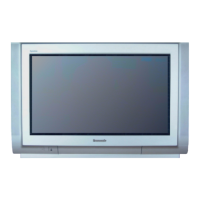
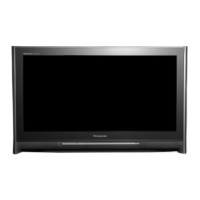
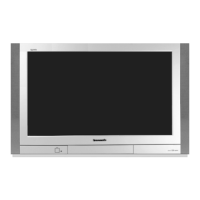
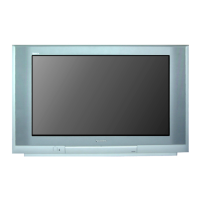





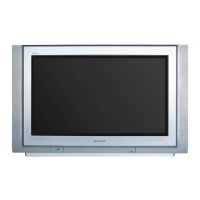
